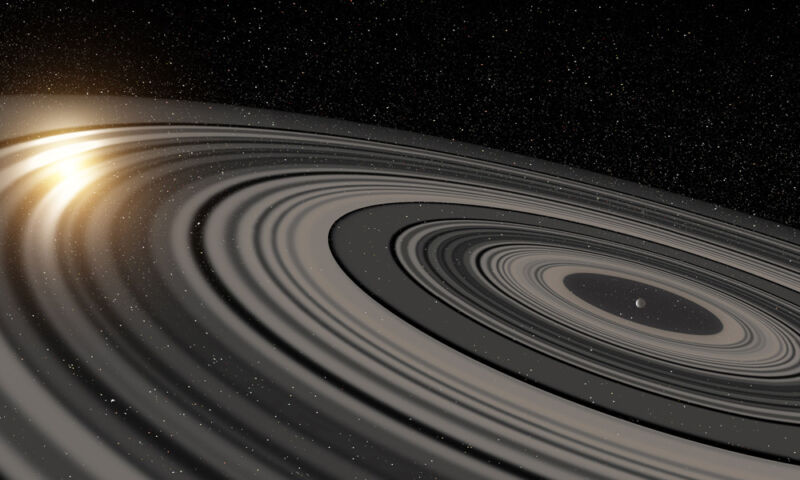Could we have already imaged a ringed exoplanet?

Enlarge / Artist's conception of a large ring system surrounding an exoplanet. (credit: Ron Miller)
Many of the exoplanets we've discovered look at least vaguely like something we're familiar with. Exoplanets have been described as super-Earths, mini-Neptunes, hot Jupiters, and so on. But not everything is entirely familiar, and we've stumbled across a number of oddballs. Among those oddballs is a group of planets with extremely low density. Lacking a Solar System analogy has forced us to come up with a non-planetary nickname: the super puffs.
Many of the super puffs are a bit hard to explain via normal planetary physics. But a group of researchers based in Europe looked at a possible alternate explanation for one super puff: it's a normal planet with unusual rings. The answer they came up with is that we can't really tell right now, but they do suggest ways that we could possibly sort this all out.
More than just a puffAlthough intense pressures make the cores of gas giants quite dense, on average, they're still gas, and they often have a large percentage of lighter gasses like hydrogen and helium. This, famously, has led to the contention that if you could somehow drop Saturn onto some water, it would float. (It would actually be torn to shreds by the gravitational pull of that much water, but we mostly let that detail slide.)
Read 13 remaining paragraphs | Comments